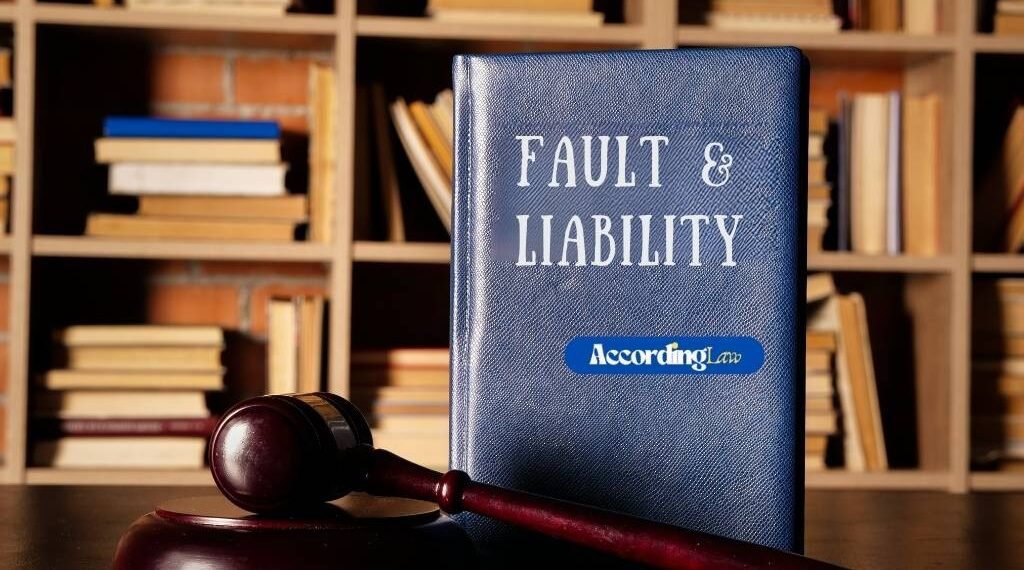Fault and liability laws in the United States play a crucial role in determining responsibility for incidents ranging from car accidents to professional negligence. These laws directly influence the outcome of legal disputes by establishing who is at fault and the extent of their liability. Understanding these principles is essential for anyone navigating potential legal issues or seeking compensation for damages.
Since the U.S. legal system varies by state, fault and liability can be applied differently depending on the jurisdiction. Some states use a comparative negligence model, dividing damages based on each party’s degree of fault, while others adopt stricter rules such as contributory negligence or strict liability in specific cases.
Table of Contents
Historical Overview of Fault and Liability
Fault and liability concepts in the U.S. have roots in English common law, which established the right to seek compensation for harm caused by others.
Understanding Negligence in Law
Negligence is one of the most important concepts in U.S. liability law. It refers to the failure to exercise reasonable care, causing harm to another party. This concept is often pivotal in cases like car accidents, where determining fault can directly influence liability. Negligence claims rely on proving four key elements:
Duty of Care
Individuals have a legal obligation to act in a manner that avoids causing harm to others. For example, drivers must obey traffic laws, use signals, and avoid distractions.
Breach of Duty
A breach occurs when someone fails to meet this expected standard of care. Examples include reckless driving, running a red light, or practicing medicine without following proper procedures.
Causation
Causation links the breach to the injury. It must be shown that the defendant’s actions directly caused the harm. Courts distinguish between:
Damages
Damages represent the losses suffered due to negligence. These may include:
Establishing damages is critical for determining compensation in negligence cases.
Types of Torts and Liabilities
Torts in U.S. law fall into three main categories:
Intentional Torts
Deliberate acts causing harm, such as assault, battery, false imprisonment, or defamation. These may allow for both compensatory and punitive damages.
Negligent Torts
Harm caused by failure to exercise reasonable care, such as auto accidents or medical malpractice. Liability is determined by whether a reasonable person would have acted differently in the same situation.
Strict Liability
Applies even when no intent or negligence is proven. Most common in product liability, strict liability holds manufacturers accountable for defective products that cause harm. It also applies to inherently dangerous activities (e.g., using explosives or keeping wild animals).
Comparative and Contributory Negligence
Different states apply different rules when multiple parties share responsibility for an accident:
Role of Insurance in Liability Cases
Insurance provides financial protection and legal support in liability disputes, especially car accidents.
Key features of liability insurance:
Benefits of insurance include financial security, legal defense, and quicker settlements compared to litigation.
Civil Lawsuit Procedures
When disputes cannot be resolved through insurance or negotiation, they may proceed to civil court.
Filing a Complaint
The plaintiff initiates the lawsuit, outlining allegations and requested remedies. Defendants are then served with a summons and must respond within strict deadlines.
Discovery
Both parties exchange evidence through interrogatories, depositions, and document requests. This clarifies the issues before trial.
Trial and Judgment
If settlement is not reached, the case goes to trial. A judge or jury examines evidence, hears testimony, and delivers a verdict. The prevailing party may be awarded damages, subject to appeal.
Settlement Negotiations and Mediation
Most liability disputes, particularly car accident cases, are resolved through settlement. Negotiations can involve parties, attorneys, or insurers.
Mediation is a popular option where a neutral mediator helps both sides reach an agreement. Benefits include:
Preparation with strong evidence, such as medical records, accident reports, and proof of expenses, strengthens the chances of a fair settlement.
Economic and Non-Economic Damages
U.S. law distinguishes between two main categories of compensation:
Some states impose caps on non-economic damages, particularly in medical malpractice cases.
Recent Developments and Future of Liability Laws
Liability law continues to evolve alongside technology and societal needs.
Key Developments
Future Directions
As technology progresses, liability laws will need to balance innovation with consumer protection.
Conclusion
Fault and liability laws in the U.S. form the backbone of personal injury and civil litigation. From negligence to strict liability, these doctrines determine how responsibility is assigned and how victims are compensated. With ongoing developments in technology, insurance, and comparative fault systems, understanding these laws is crucial for individuals, businesses, and legal professionals alike.


